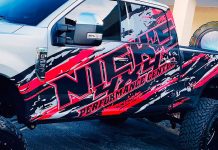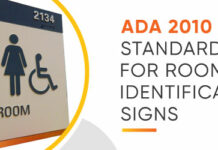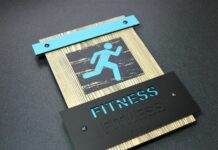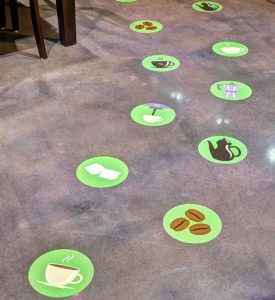 Consumers are constantly being targeted with ads, signage, and other stimuli, so capturing and maintaining their attention can be a challenge.
Consumers are constantly being targeted with ads, signage, and other stimuli, so capturing and maintaining their attention can be a challenge.
One major competitor for consumer eyes is the mobile phone. It has become the norm to send emails and texts, read the news, and catch up on social media—all while walking to a destination. This makes it even more difficult to command someone’s attention.
However disruptive tactics, such as wayfinding graphics, can help guide consumers in the right direction, even when they’re gazing toward the ground.
Wayfinding graphics can serve a number of purposes. The right signage can minimize confusion, lead guests to desired locations easily, increase safety measures, and help maintain an
efficient facility.
When designing this signage, it’s important to take the perspective of those you are trying to target. For instance, floor graphics can be an effective way to grab the attention of someone looking down at their phone and get your
message across.
Let’s look at the various uses in different industries.
Retail. In the world of retail, such as grocery and clothing stores, not only do wayfinding graphics help move traffic along and prevent confusion, they can also support different promotions.
For example, if there is a sale on a product, wayfinding graphics can pique the interest of customers and then guide them to the right section of the store.
Production Facilities. Wayfinding graphics can support both staff and equipment operators in production facilities in several ways. Ensuring that pathways remain clear supports efficiency and helps keep operators and guests safe.
Wayfinding graphics can clearly mark lanes, reminders, and queues for employees and machinery to stay within a specified area or to avoid another area. This allows employees and operators to feel secure, trust that they are out of the way, and maintain an
efficient operation.
Sports Venues. Sporting and other sponsored events that have many attendees can quickly become confusing and intimidating if the proper signage is not in place. Large facilities, such as sport arenas, often use wayfinding graphics to help guide visitors to food, drinks, restrooms, seating, exits, parking, and much more.
Additionally wayfinding graphics can be useful even outside of the facility, guiding customers into the correct entrances from parking locations. These tactics can also be useful for larger facilities, such as theme parks.
Professional Spaces. Installations in professional environments tend to be more straightforward. They exist simply to guide visitors and staff from point A to point B with ease, without encouraging a purchase. However the diverse capabilities of printed graphics give facilities the freedom to be
creative in their designs.
For example, the children’s wing in a hospital may feature brighter, more dynamic and intriguing designs that help patients feel more comfortable.
One of the biggest challenges in developing wayfinding graphics is ensuring that the design can be easily consumed by the viewer.
Facilities often can get caught up in what they want a graphic to achieve and, as a result, overlook the placement and design.
It is important to visualize how the guests will be viewing the graphic. Take a step back and think about how the graphic will fit into the environment and determine where in the facility will be the most effective place for an installation.
Having a clear objective for each installation can help save on costs and ensure that the graphic achieves its goals, whether that’s increasing sales and brand loyalty or improving safety.
Before installing graphics, determine what the purpose is and ensure that the design and location of the installation supports that purpose.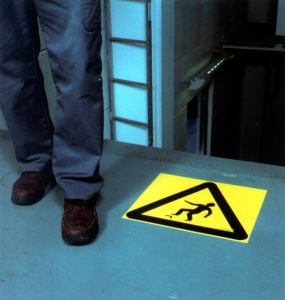
A positive experience keeps customers coming back. If a facility is difficult or confusing to navigate, it can leave a bad impression on a guest and damage brand reputation.
Wayfinding graphics help ensure that the time customers spend at a facility is stress-free and successful and gives them a reason to return soon.
By Tammi Johnson, business development manager at 3M Commercial Solutions Division.


